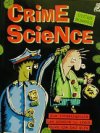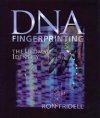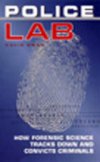Crime Lab Additional Information
Learn more about forensic science at pbskids.org/dragonflytv/tguide_forensics.html (DragonflyTV, PBS) and whyfiles.org/014forensic/index.html (Why Files, University of Wisconsin).
The Federal Bureau of Investigation has a page for kids at www.fbi.gov/kids/6th12th/6th12th.htm(FBI).
For older kids, be a DNA detective at www.dnalc.org/resources/dnadetective.html (Dolan DNA Learning Center, Cold Spring Harbor Laboratory).
You can learn more about the mysterious disappearance of aviator Amelia Earhart at www.ameliaearhart.com/(Amelia Earhart).
To learn more about a technique developed at Purdue University for tracing documents to specific printers, see news.uns.purdue.edu/UNS/html4ever/2004/041011.Delp.forensics.html (Purdue University).
Sohn, Emily. 2004. Gene sleuths track down ivory sources. Science News for Kids (Oct. 6). Available at http://www.sciencenewsforkids.org/articles/20041006/Note3.asp.
______. 2003. Baby swaps, crime scenes, and DNA testing. Science News for Kids (Aug. 20). Available at http://www.sciencenewsforkids.org/articles/20030820/Feature1.asp.
Books recommended by SearchIt!Science:
 |
Crime Science: How Investigators Use Science to Track Down the Bad Guys— Vivien Bowers
Published by Firefly Books, 1997.
“Have you ever wondered if you’d make a good investigator?” asks author Vivien Bowers. The book takes you to several crime scenes. Learn the skills and techniques of the men and women who help solve crimes. How do people detect counterfeit money and checks? Find the culprit of a crime committed by a computer hacker. Inside information, as well as the most recent scientific advances in crime solving, is explained. DNA tests and fingerprint databases are examined to find the crooks and killers that are tracked and caught by experts around the world. |
 |
DNA Fingerprinting: The Ultimate Identity — Ron Fridell
Published by Franklin Watts/Scholastic, 2001.
Every cell in the human body contains something called DNA, the blueprint that holds all the information that makes your body different from everyone else’s. Unless you have an identical twin, no one on earth has the same DNA that you do. This comes in handy in solving crimes, because while smart criminals might be able to avoid leaving actual fingerprints, it is nearly impossible not to leave behind some DNA (it’s in your sweat, tears, dead skin cells, etc.). Learn how scientists and law enforcement work together to use this information to track down dangerous criminals. This book tells how and shares some interesting stories of real crimes that DNA evidence has helped solve. |
 |
Police Lab: How Forensic Science Tracks Down and Convicts Criminals— David Owen
Published by Firefly Books, 2002.
The world of forensic science is one of mystery and intrigue. It’s the job of the forensic scientist to take crime scene evidence and figure out what exactly happened. Today, scientists can look at fingerprints, hair, bullets, handwriting samples, poisons, and even skulls to determine facts of the crime. In this book, you will discover many crime mysteries that were solved by using the wisdom of forensic science. Learn how scientists used a picture of a crime victim, Mrs. Ruxton, to positively identify her skull. See how scientists now use DNA evidence and computer technology to link suspects to crimes. |
Power Words
DNA short for deoxyribonucleic acid. The material that makes up the genes and that is found in all cells. DNA controls the function of all the cells in the body. DNA in the body consists of two thread-like strands that are linked together in the shape of a double helix.
DNA fingerprinting The use of DNA to find out the identity of a person or to discover the relationship between different organisms. In DNA fingerprinting, scientists study the patterns of DNA molecules in the genes and compare them.
Copyright © 2002, 2003 Houghton-Mifflin Company. All rights reserved. Used with permission.
